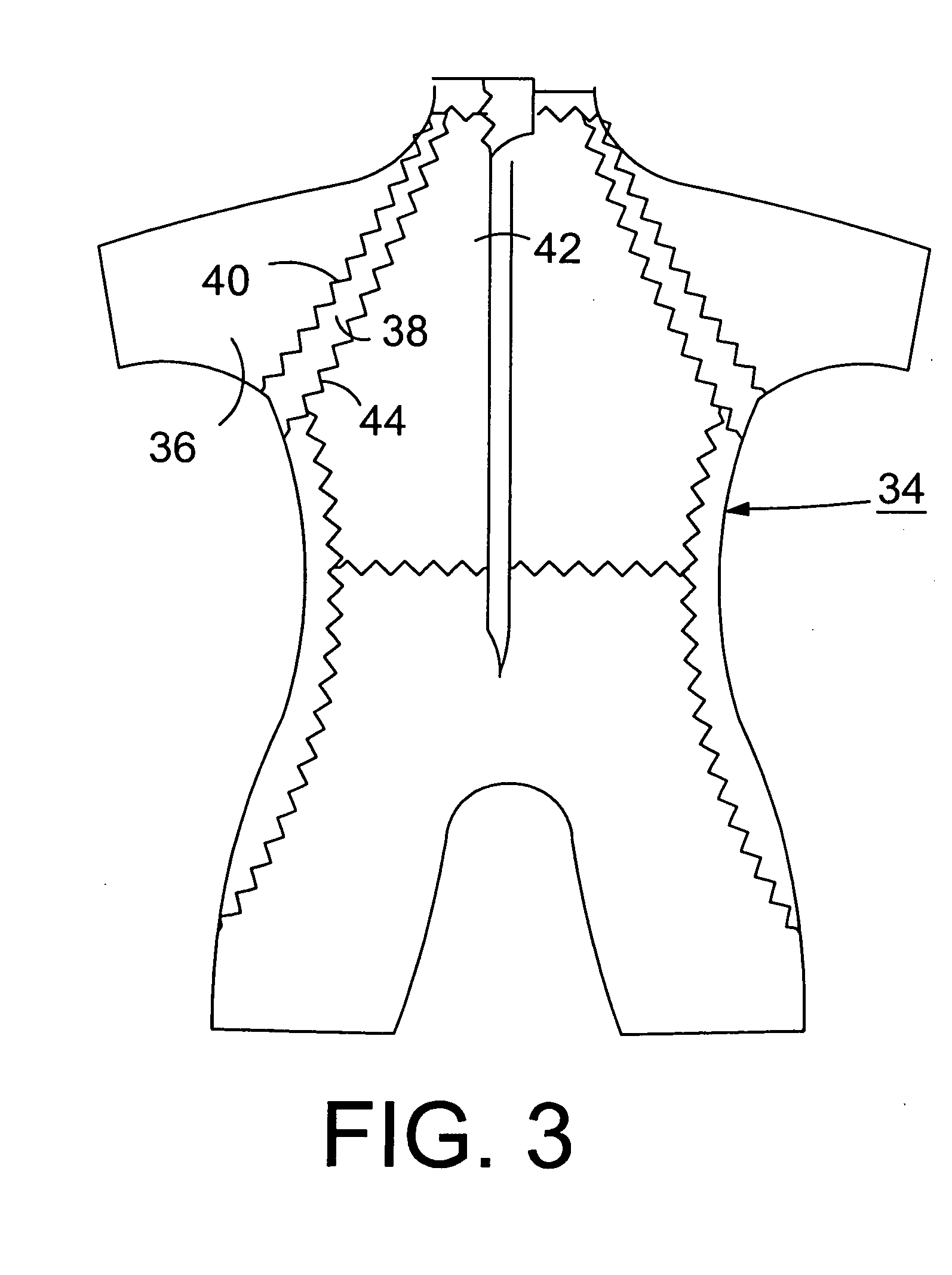Wetsuit and wetsuit material
a technology of wetsuits and wetsuits, applied in the field of wetsuits, can solve the problems of affecting the appearance of the wetsuit, affecting the suit, and affecting the suit, and achieve the effect of resisting damage to the exterior surface and rapid drying
- Summary
- Abstract
- Description
- Claims
- Application Information
AI Technical Summary
Benefits of technology
Problems solved by technology
Method used
Image
Examples
Embodiment Construction
[0019] As shown in FIG. 1, the wetsuit material 10 comprises three principal layers: a base fabric 12, an outer neoprene layer 14, and an inner neoprene layer 16.
[0020] The base fabric is preferably a nylon / lycra, high stretch fabric, similar to the fabrics used on the exterior of conventional wetsuits. The fabric should have a four-way stretch capability in the range of 200% to 250%. The degree of stretchability of the base fabric should match the stretchability of the neoprene layers. The fabric weight is preferably 6 ounces per yard (of 60 inch wide fabric). A knit or woven base layer fabric can be used.
[0021] The neoprene layers 14 and 16 are both preferably a closed-cell, foam neoprene. However, the layer 14 is denser, and tougher, than the layer 16. The less dense layer 16, on the other hand, is thicker than layer 14, and contributes more to the warmth of the wetsuit. These layers are secured to the opposite sides of the base fabric 12 by thin layers of high temperature chlo...
PUM
| Property | Measurement | Unit |
|---|---|---|
| thickness | aaaaa | aaaaa |
| thickness | aaaaa | aaaaa |
| thicknesses | aaaaa | aaaaa |
Abstract
Description
Claims
Application Information
 Login to View More
Login to View More - R&D
- Intellectual Property
- Life Sciences
- Materials
- Tech Scout
- Unparalleled Data Quality
- Higher Quality Content
- 60% Fewer Hallucinations
Browse by: Latest US Patents, China's latest patents, Technical Efficacy Thesaurus, Application Domain, Technology Topic, Popular Technical Reports.
© 2025 PatSnap. All rights reserved.Legal|Privacy policy|Modern Slavery Act Transparency Statement|Sitemap|About US| Contact US: help@patsnap.com



